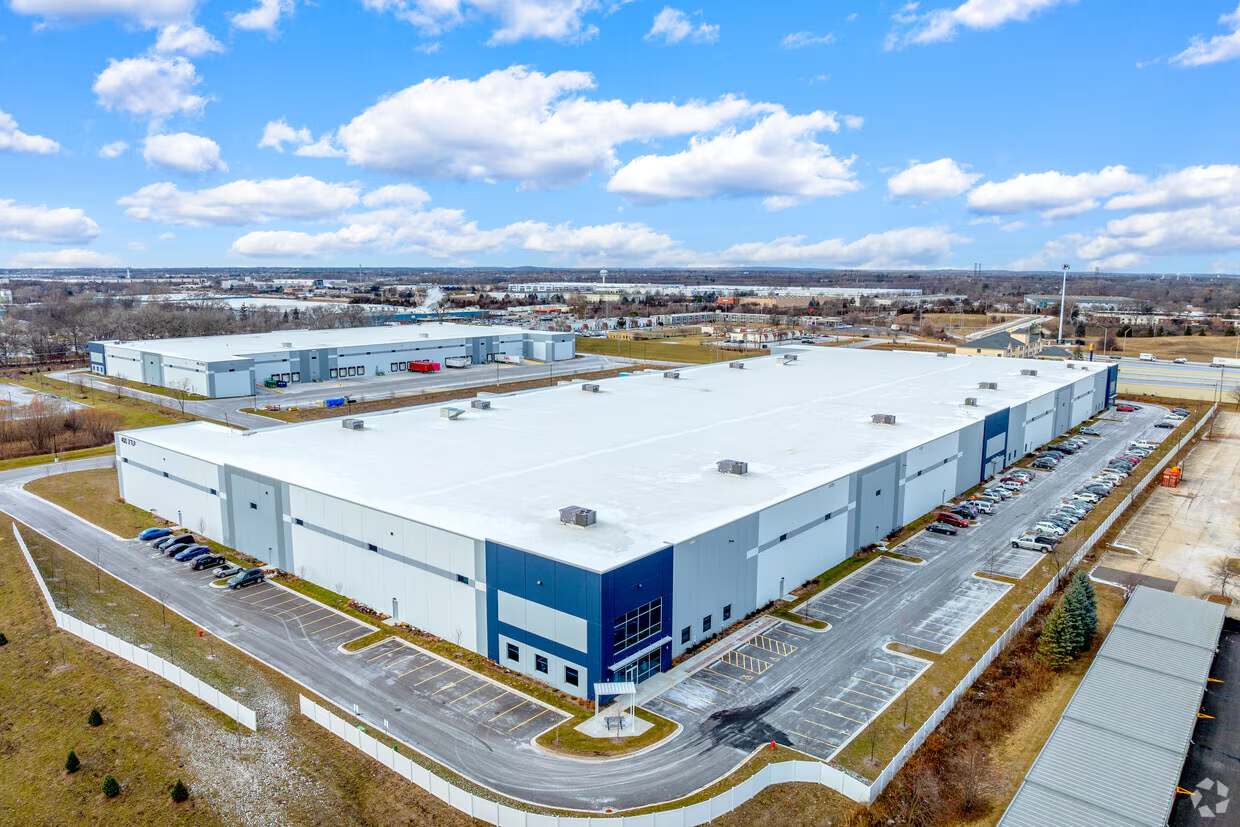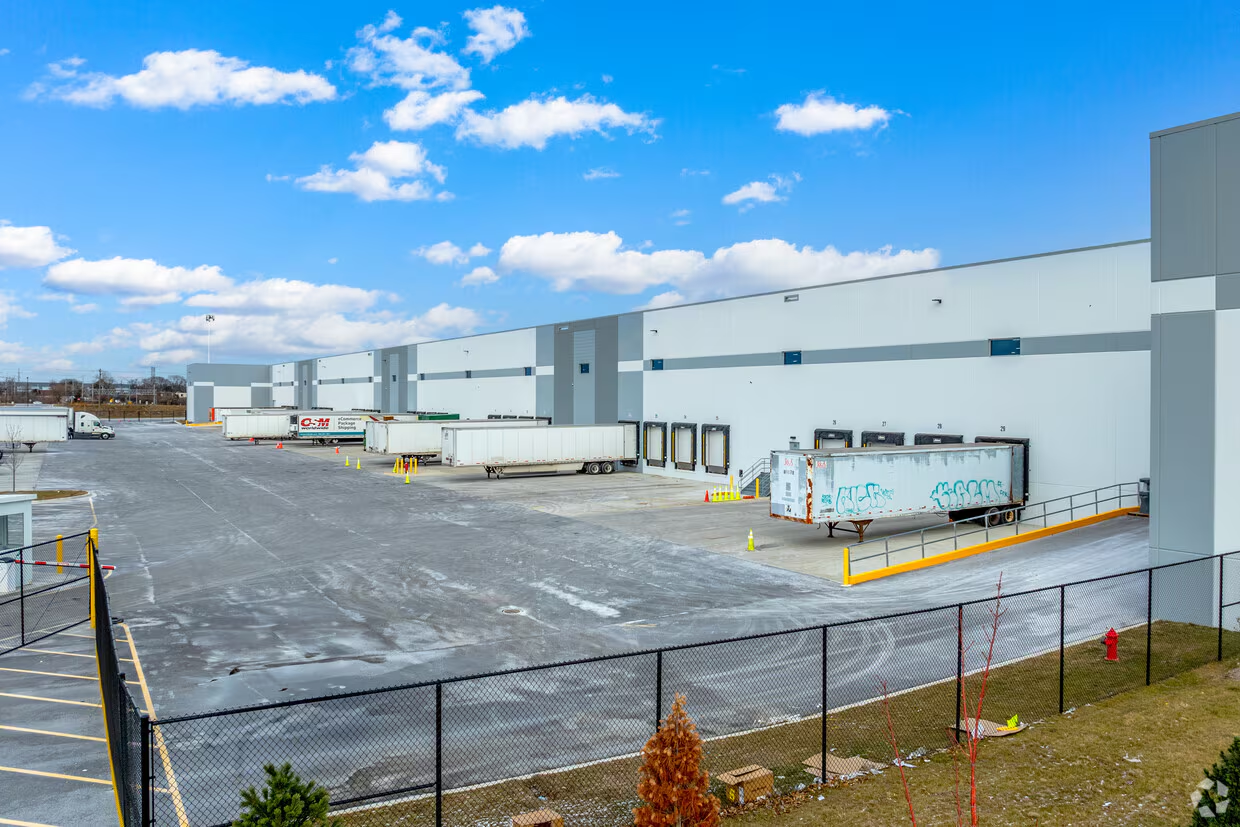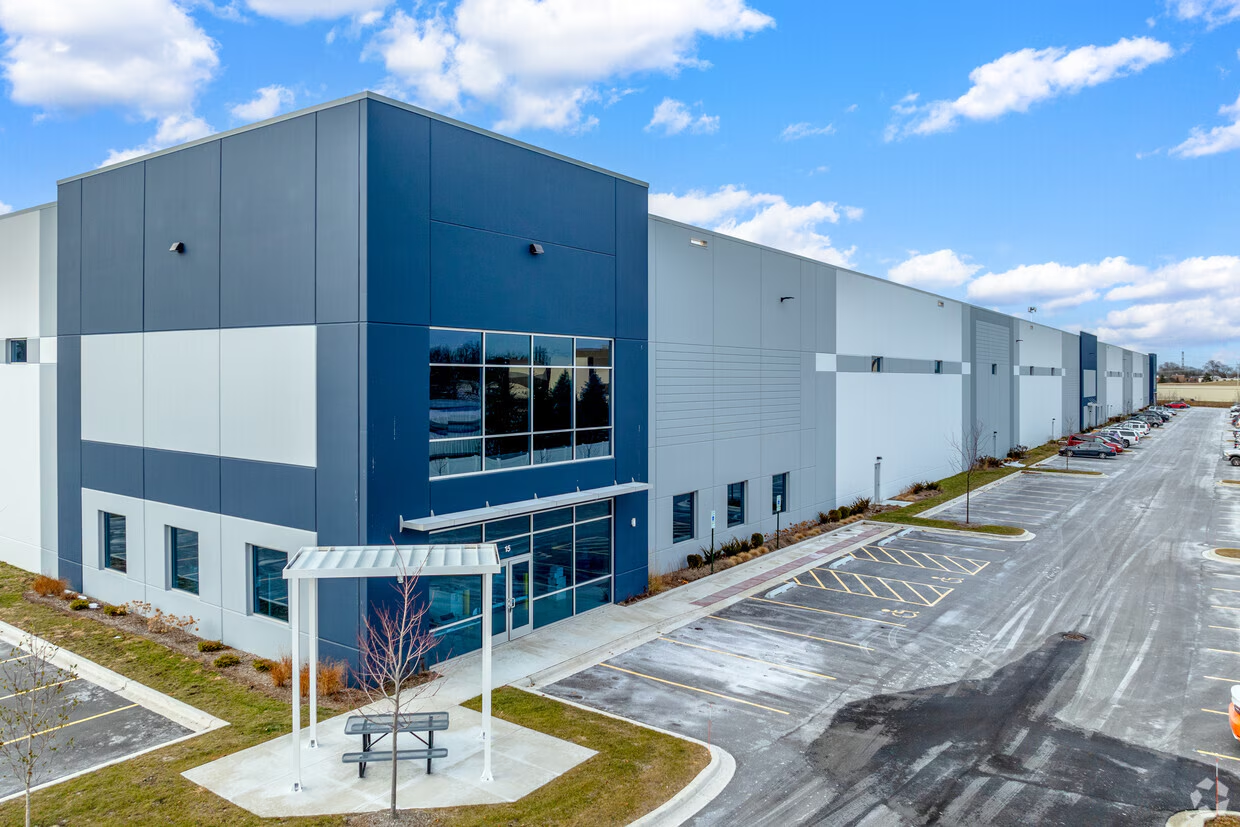Ares Management Doubles Down on Aurora
In a market where headlines focus on rising vacancy and softened leasing momentum, Ares Management’s $58 million acquisition of 400 and 410 Smoke Tree Plaza in Aurora, Illinois, shows that well-located, low-office-density Class A industrial properties in high-traffic suburban corridors are still commanding serious investor interest.
This 263,000-square-foot logistics facility, built during the height of the pandemic-era industrial boom, is Ares’ second major purchase in Aurora in the past six months. The firm also acquired the 356,000-square-foot warehouse at 2200 Sullivan Road in December 2024 for $46 million. Together, these deals represent a $100M+ bet on Aurora’s long-term logistics value and a case study in how institutional capital is shifting strategies amid a market transition.

From Spec to Strategy: Why Aurora Is Back on the Radar
Aurora wasn’t always considered a core industrial submarket. But in recent years, as infill markets like O’Hare, North DuPage, and Cicero reached pricing ceilings and occupancy constraints, western suburbs with access to I-88 and proximity to Chicago’s broader freight infrastructure gained renewed appeal.
The Smoke Tree Plaza deal, at roughly $220 per square foot, reflects Ares’ willingness to pay a premium for modern assets with efficient layouts, new construction, and easy truck access. Crucially, this building, like the Sullivan Road facility, features minimal office buildout and maximum warehouse utility, ideal for tenants focused on throughput, storage, and rapid delivery.
In an environment where speculative development has cooled significantly from 12 million square feet in Q3 2023 to just 1.4 million in Q1 2025, these properties are becoming increasingly scarce.
Without The Office Space
There’s been a quiet but significant shift in what “Class A” means in the industrial space market. From 2017 to 2022, many developers emphasized “showroom-ready” office finishes and high-spec buildouts aimed at attracting brand-conscious e-commerce brands and 3PLs. But now? Tenants want function over flair.
Buildings like Smoke Tree Plaza and 2200 Sullivan Road reflect a leaner, logistics-first mentality. Their low office density translates to lower operating costs, greater re-leasing flexibility, and faster tenant turnover cycles. And in a world of rising insurance and labor costs, those efficiencies matter to occupiers and institutional buyers.

Investors Chasing Scarcity and Spec Efficiency
Ares isn’t the only firm leaning into this strategy. As the pipeline of new industrial supply contracts, investors are locking in assets that are already built and stabilized or close to it.
What’s notable is that Ares is focusing not just on gateway locations like Elk Grove Village or Des Plaines, but also on emerging suburban nodes like Aurora that offer pricing arbitrage and supply constraints with room for rent growth.
A Cautionary Tale for Overbuilt Office-Heavy Warehouses
This trend also puts pressure on older Class B buildings that over-allocated space to office users. The current leasing market favors high-cube, cross-dock facilities with minimal office footprint, and many office-heavy buildings are being bypassed unless heavily discounted or repurposed.
For developers, this marks a shift. The new Class A template is 90% warehouse, 10% or less office, high clear height, ESFR sprinklers, ample trailer parking, and low common area maintenance (CAM) load. Simple wins.
And for sellers, it means focusing on leasing up and maintaining occupancy, not on costly speculative buildouts or amenities unlikely to return investment in a slower leasing cycle.

The Bigger Picture: Suburban Strength and Infrastructure-Driven Value
While media coverage tends to focus on high-profile urban properties or dramatic data center conversions, the real action may lie in these quietly strategic suburban acquisitions. Aurora sits at the western edge of Chicagoland’s industrial belt, but offers excellent proximity to the I-88 corridor, workforce housing, and open land for eventual expansion.
Moreover, Aurora’s location places it within easy reach of Midwestern distribution routes, giving tenants flexibility to serve both Chicago and broader regional networks. It’s not surprising that Ares has now made two consecutive investments here.
Their activity underscores a key thesis: infrastructure and access, not hype or branding, drive long-term industrial value. That’s especially true when those assets are easy to manage, low on office obligations, and ready for modern logistics tenants to plug and play.
Final Thoughts
Ares’ acquisition of 400 and 410 Smoke Tree Plaza isn’t just another pandemic-era spec deal finding an exit; it’s a marker of how the smartest money in industrial real estate is repositioning. With rent growth still positive, new deliveries slowing, and demand shifting toward functionality over flair, low-office-density Class A buildings in high-traffic corridors like Aurora are becoming institutional favorites.
If you’re evaluating acquisition targets or development opportunities in suburban Chicago, now is the time to rethink what constitutes “prime.” Our team of Chicago commercial real estate agents specializes in identifying high-utility industrial assets positioned for the next cycle of growth.

